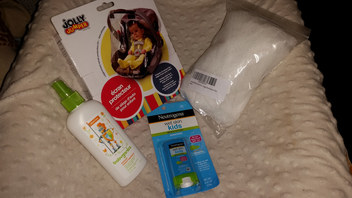False Claims Then there’s the issue of the various claims that sunscreen manufacturers make about their products. Based on the research that’s been completed to date, there is insufficient data to support most claims on the sunscreen bottle. Claims such as: ‘waterproof’, ‘sweatproof’ and ‘broad spectrum protection’ don’t hold up. In fact, probably the most misleading is ‘cancer protection’ or ‘prevents cancer’. Sunscreen alone has not actually been shown to protect against certain forms of skin cancer, particularly melanoma, which is the most deadly form of skin cancer. Melanoma and Other Skin Cancers Why should we be concerned about melanoma? Well, since 2000, the rates of new melanoma cases among both men and women have been climbing by 1.4 to 1.6 percent per year (CDC 2014). A number of studies conducted in the 1990s reported higher incidence of melanoma among frequent sunscreen users (Autier 1998, Beitner 1990, Westerdahl 2000, Wolf 1998).
SPF: Is Bigger Better? Does SPF or the Sun Protection Factor make a difference? Most of us believe that Bigger Is Better, but there is no definitive evidence of increasing protection as the SPF values increase. In fact, beyond SPF 50, there appears to be little benefit. Properly applied SPF 50 blocks approximately 98% of sunburn rays. Properly applied SPF 100 blocks 99%. When used correctly, sunscreen with SPF values in the range of 30 to 50 will offer adequate sunburn protection, even for people most sensitive to sunburns.
Oxybenezone and 4-MBC are hormone disruptors and frequently used UV filters used in sunscreens. Oxybenzone could be found in about 70% of the non-mineral sunscreens evaluated by the EWG this year. Retinyl Palmitate and other Vitamin A derivatives have been shown to result in more skin tumors and lesions on animals treated with this ingredient and then exposed to sunlight. While MI, has actually been labeled as an inactive ingredient or preservative, was called ‘the allergen of the year’ by the American Contact Dermatitis Society in 2013. In March 2015, the European Scientific Committee on Consumer Safety concluded that no concentration of MI could be considered safe in leave-on cosmetic products (EU SCCS 2014). MI is present in 66 sunscreens assessed in this year’s report. What to Look for in a Good Sunscreen All these concerns in mind, what can we do to better protect ourselves from the harmful effects of sun exposure? One thing, when using sunscreen, pick the right one. Based on current research, mineral sunscreens tend to rate best, particularly those with zinc oxide or titanium dioxide. They are stable in sunlight, offer a good balance between protection from the two types of ultraviolet radiation (UVA and UVB) and don’t often contain potentially harmful additives. (EWG report, 2016).
Sunscreen is a helpful tool for protecting your skin from the harmful effects of the sun when used appropriately. Be sure to use it as recommended, and choose a sunscreen that has minimal/no harmful chemicals in it, particularly a mineral based one. Keep these things in mind, and the additional measures you can take to protect your skin, and you can help decrease your risk of developing serious illnesses like skin cancer.
1 Comment
mary lynn
8/23/2016 10:44:49 am
Thanks for sharing your research, Sarah. This information is very helpful for future purchases.
Reply
Leave a Reply. |
Sarah Connors
I am a Naturopathic Doctor and Doula providing care in the Kitchener-Waterloo area. I have a passion for helping people with their health issues and improving the birth experience for Moms, and their babies. I also have a life long love affair with soccer, curling, and the alto saxophone. Archives
November 2020
Categories
All
|
Photos from Rural Royalty, manu flickr2010, Ryan Dickey, wocintechchat, huskyte77, paulswansen, Black Room Photography, harum.koh, Emery Co Photo, JeepersMedia, BrownGuacamole, wellnesswildflower, JeepersMedia, vastateparksstaff, colindunn, seelensturm, /\ \/\/ /\, 50mm.za, The Simpsons (Lee, Shirley, Luke and Rachel), AGRONAUTI, aivas14, Jonathan Rolande, winnifredxoxo, juhansonin, osseous, nan palmero, Theo Crazzolara, brianfagan, TP studio, wuestenigel, torbakhopper, anka.albrecht, Michael Stern, [-ChristiaN-], franchiseopportunitiesphotos, terren in Virginia, nateOne, barnimages.com, Dun.can, wuestenigel, @lattefarsan, amandabhslater, aphrodite-in-nyc, nutritionaldoublethink, Anne Worner, donnierayjones, mikecogh, angeloangelo, Rob.Bertholf, getaiwan, Lida Rose, matsuyuki, SurFeRGiRL30, marcoverch, amsfrank, mdaltry, nutrition education, Mike Prince, Edsel L, Neighborhood Nini, philipp.alexander.ernst, Mediocre2010, homethods, quinn.anya, Gamma Man, katerha, Eric Kilby, National Institutes of Health (NIH), rcmd_cfdfw_5_2, curtis palmer, Ray in Manila, frankieleon, Airsoftpal.com, byzantiumbooks, cchana, Brian Legate, Matt Lavin, BradHinton, monpetitchouphotography, wuestenigel, alexisjordanlewis, ByEPhotos, erix!, RLHyde, return the sun, quinn.anya, mliu92, frankieleon, loudista, Lyn Lomasi, upslon, derrickbrutel, cchana, National Institutes of Health (NIH), watts_photos, marcoverch, derrickbrutel, francesbean, weegeebored, Airsoftpal.com, Etwood, wu_135, shixart1985, Ingrid Taylar, VeritasFotografie, BioDivLibrary, emmanuelmorales1, Thanks for 1.5 Million Views!!, Will Merydith, reader of the pack, RoxyHobbs, Khanelle Prod' Medias, storyvillegirl, agromonitor, Arenamontanus, six:eleven, cote, SweetOnVeg, nenoirenediaz, lucianvenutian, markhillary, anotherlunch.com, inkknife_2000, archibald jude, rawtrigger, Imaginary Museum Projects: News Tableaus, Pavel P., Courtney Emery, Thien Gretchen, physiognomist, bark, Michigan Municipal League (MML), alberth2, Merelymel13, neofob, Care_SMC, Parker Knight, B*2



 RSS Feed
RSS Feed
